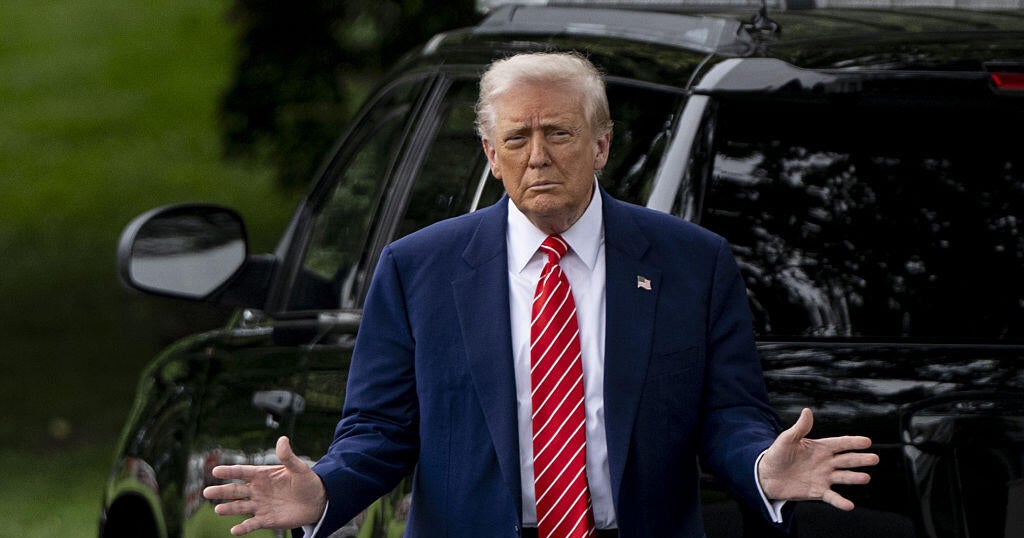An appeals court has upheld an injunction halting the Trump administration’s efforts to downsize the federal workforce, leaving cuts led by the Department of Government Efficiency (DOGE) on hold for the time being. In a 2-1 ruling, the Ninth Circuit Court of Appeals denied the White House’s request for an emergency stay. The court emphasized that the Executive Order in question overstepped the bounds of presidential authority under the U.S. Constitution.
| Article Subheadings |
|---|
| 1) Court Ruling Details |
| 2) Administration’s Legal Arguments |
| 3) Implications for Federal Employees |
| 4) Judicial Commentary |
| 5) Future of Federal Workforce Policies |
Court Ruling Details
On Friday, an appeals court confirmed a ruling that prevents President Trump’s administration from implementing significant cuts to the federal workforce. The Ninth Circuit Court of Appeals made this decision in response to a request from the White House for an emergency stay on a prior injunction issued by U.S. Judge Susan Illston. This injunction contested the legality of the Trump administration’s efforts to reduce federal staffing levels, asserting that the President’s Executive Order exceeded his constitutional powers.
The appeals court articulated in its ruling that while the President does possess considerable authority, particularly regarding the removal of appointed officials, this authority does not extend to drastic reductions in the federal workforce without proper legislative backing. Consequently, the administration’s broader aspirations to streamline how the federal workforce operates have effectively been stalled.
Administration’s Legal Arguments
In court, the Trump administration argued that the Executive Order and accompanying policy memos offered only guidelines for agencies in managing their workforce, stressing that agencies have autonomy in how they carry out staffing decisions. Supporters of the administration contended that these changes were necessary to improve efficiency and reduce waste within the federal government.
However, at the core of the legal battle are concerns raised by labor unions and some municipalities, including San Francisco and Chicago, who claim that the administration’s actions not only jeopardize jobs but also undermine the essential services that federal employees provide. The legal implications of these arguments reflect a deeper conflict between the executive branch and the autonomy of federal agencies.
Implications for Federal Employees
The injunction currently halting the administration’s cuts affects tens of thousands of federal employees. Reports suggest that a significant number have been fired, while others opted for various deferred resignation programs. Although the exact figure on job losses remains unclear, estimates indicate that over 75,000 federal workers have accepted deferred resignations, and numerous probationary staff have already been dismissed.
For employees facing uncertainty, the court ruling offers a temporary reprieve, allowing them to maintain their positions while the legal battle ensues. Nevertheless, the prolonged controversy surrounding the Executive Order has generated considerable anxiety among federal employees regarding their job security and the potential for future layoffs.
Judicial Commentary
Judge Susan Illston has articulated a viewpoint that suggests any substantial reorganization of federal agencies must involve collaboration with Congress. “Presidents can undertake significant reorganizations,” Illston noted, “but not unilaterally.” This judicial perspective emphasizes the critical balance of power between the legislative and executive branches, particularly in matters that could affect myriad public servants.
The ruling underscores an interpretive lens on the scope of presidential authority under the Constitution, reiterating that significant changes to federal operations cannot happen in isolation. Hence, the court’s decision acts as a check on executive power, reinforcing the importance of legislative processes in federal governance.
Future of Federal Workforce Policies
Looking ahead, the implications of the ruling may factor significantly into the Trump administration’s objectives concerning the federal workforce. As the legal narrative unfolds, officials may need to reconsider their strategies for instigating workforce reforms, especially in the context of fulfilling campaign promises while adhering to constitutional limits.
The halted reforms also raise broader questions about federal workforce policy and its reform trajectory. If the administration decides to pursue legislative routes to effect changes, it could invite negotiations and discussions with Congress, introducing new dynamics into the political landscape surrounding employment in federal service.
| No. | Key Points |
|---|---|
| 1 | The Ninth Circuit Court upheld an injunction halting federal workforce cuts. |
| 2 | Officials argued that the executive order provided guidelines for agency flexibility. |
| 3 | Tens of thousands of federal employees have faced job losses during this period. |
| 4 | Judicial commentary emphasized the necessity of legislative cooperation. |
| 5 | Future reforms may necessitate collaboration with Congress as a political dynamic. |
Summary
The ruling by the Ninth Circuit Court marks a significant moment in the ongoing conversation about the balance of power between the executive branch and federal agencies. While the Trump administration may seek efficiency, the legal injunction serves as a potent reminder of the limits of presidential authority. The potential changes to federal workforce policy will require thoughtful consideration and collaboration with Congress moving forward.
Frequently Asked Questions
Question: What does the Ninth Circuit Court’s ruling imply for federal workforce policies?
The ruling reinforces the notion that significant changes to federal workforce policies must involve congressional collaboration, thus limiting unilateral presidential actions.
Question: How many federal employees are affected by the administration’s workforce cuts?
It is estimated that tens of thousands of federal employees have either been fired or taken deferred resignations due to the administration’s efforts to downsize.
Question: What is the significance of Judge Illston’s commentary?
Judge Illston’s remarks highlight the constitutional requirement for legislative cooperation when enacting large-scale reforms within federal agencies, emphasizing a critical check on executive power.
